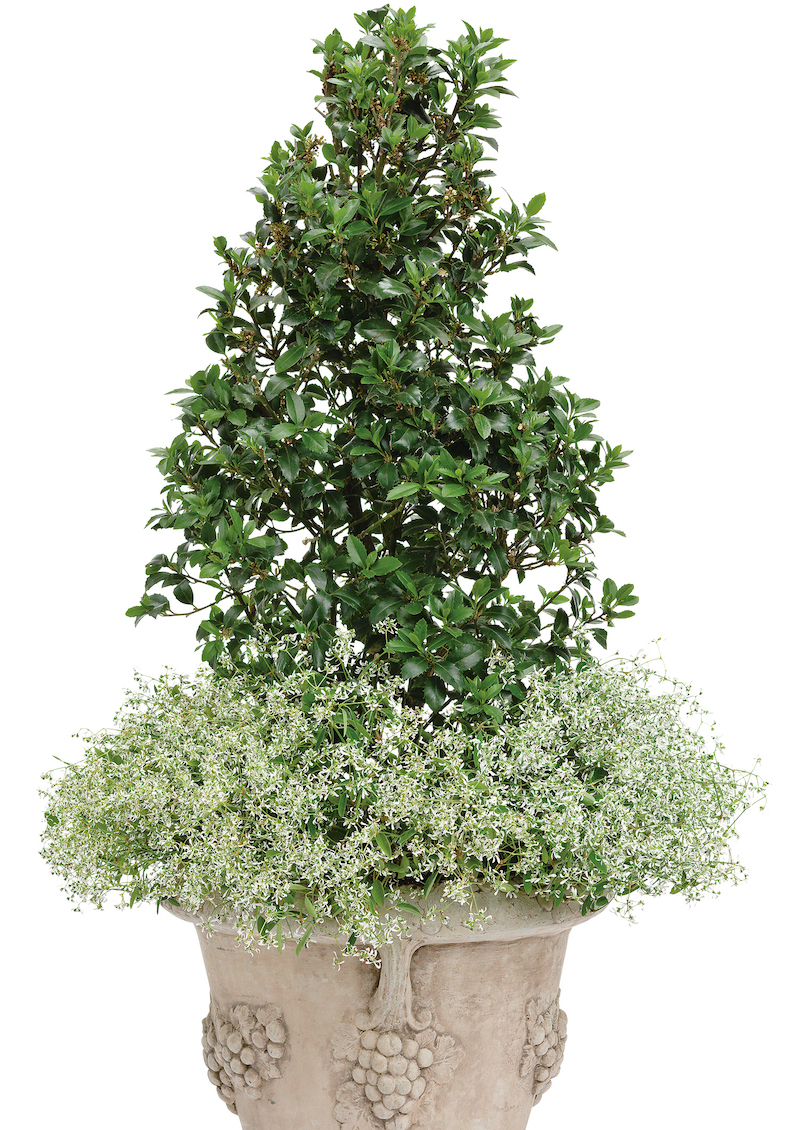Blue Holly is a tough evergreen shrub able to survive as far north as zone 5. Still, it is important to winterize blue holly properly to ensure that it comes back strong each growing season. These tips and tricks will help to avoid browned leaves that are commonly associated with winter injury.

Protecting Blue Holly in Winter
Winter can bring harsh dry, windy conditions that can damage your blue holly. Prevent damage to your young shrubs by covering them with burlap, leaving a small hole for air to pass through to avoid fungal issues. You can also protect the roots by surrounding the root zone with a mulch layer 2 inches deep.
Cutting Back Blue Holly For Winter
Make sure to continue removing dead and damaged branches through the winter. Pruning blue holly for winter is mostly dependent on aesthetics. If you want a full-sized blue holly shrub, major pruning is not needed. They can grow up to 15 feet high, so to control blue holly’s size, you may want to cut back the shrub, staggering your trim length. You may choose to prune during early winter while red berries look best for indoor displays. Alternatively, pruning during late winter will have the benefit of leaving the berries in your landscape for color.

Blue Holly Winter Care in Pots
Provide some protection for your outdoor potted blue holly by moving it to a sheltered location. Burlap wrapping will also provide great protection. Place a few stakes in the pot to hold up the burlap, making sure there’s a hole for air. Avoid container cracking by using a weather-resistant pot instead of terracotta or clay. There is no need to bring the potted plants indoors unless you live in USDA zone 5 or below.

Watering Blue Holly in Winter
In order to help your Blue Holly survive through winter, make sure to give the plant a deep drink of water in the fall. Keeping the holly moist through the end of autumn will protect your evergreen from sun scald, and will hydrate the roots before a drying freeze. Water during winter if you see signs of wilting or shriveling. Otherwise, no additional water is necessary if your area receives regular precipitation.
Growing Blue Holly Indoors
These plants are not typically good candidates for keeping indoors. These plants do best with some exposure to cold in the winter and require a good amount of air circulation and light to stay healthy.
Steps To Care For Blue Holly in Winter
Here are a few specific steps you can take to protect your blue holly from winter injury.
Step 1 - Water deeply in the fall, remove dead or damaged branches and dead leaves
Step 2 - Insert stakes around your young blue holly shrub to hold up burlap
Step 3 - Cover plants with burlap leaving a small hole for airflow
Step 4 - Apply a 2-inch layer of mulch to the surrounding area, avoiding the trunk
Step 5 - Move any potted plants to a location sheltered from wind
 |
Author Chris Link - Published 2-06-2023 |
